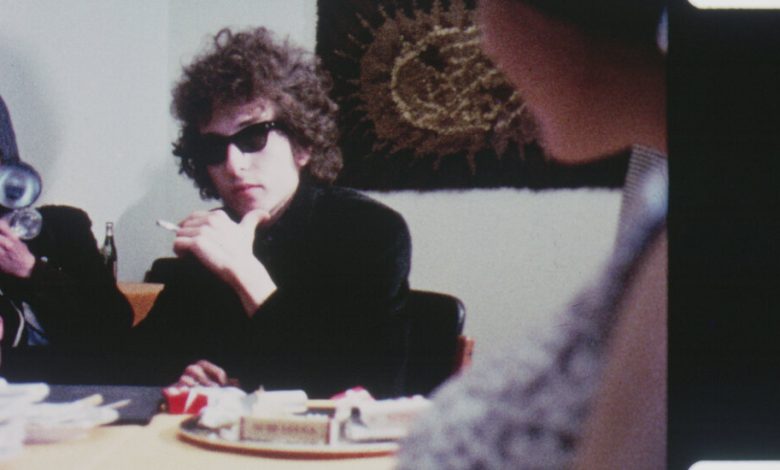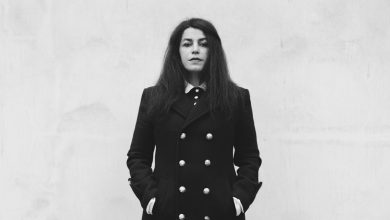Dylan’s Back Pages, and Then Some

BOB DYLAN: Mixing Up the Medicine, written and edited by Mark Davidson and Parker Fishel
In 2016, the world learned that a new Bob Dylan Center was coming to Tulsa, Okla. Dylan said, “I’m glad that my archives, which have been collected all these years, have finally found a home and are to be included with the works of Woody Guthrie and especially alongside all the valuable artifacts from the Native American Nations.” “Bob Dylan: Mixing Up the Medicine” is the center’s official publication, a lavishly illustrated collection of archival treasures, edited by Mark Davidson and Parker Fishel. It also has new essays by a host of Dylan scholars, from artists like Ed Ruscha, Richard Hell and Lee Ranaldo to writers like Greil Marcus, Joy Harjo, Michael Ondaatje and Amanda Petrusich.
As the editors note in their preface, archives are incomplete by nature. But Dylan has always set out to make incompletable music, full of stories that go on telling themselves long after he’s moved on and left them behind. Archives or not, Dylan remains the drifter who gave his name as Alias in Sam Peckinpah’s “Pat Garrett and Billy the Kid.” He never sits still long enough for anyone to pin him down. At 82, currently barnstorming through America, he refuses to be an oldies act, playing his newer songs (mostly from his 2020 album “Rough and Rowdy Ways,” one of his best) and ignoring nearly all his hits.
The artifacts here are full of history. There’s Dylan’s scuffed-up copy of the 1960 anthology “Blues Fell This Morning,” with songs by Bukka White, Blind Boy Fuller, Kansas Joe and Memphis Minnie. On the back cover, he’s scrawled, “Made for and about Bob Dylan.” Under the liner notes, he writes, “Hand read by Bob Dylan.” The book has an early draft of his Oscar-winning 2000 song “Things Have Changed” — he wrote it on the back of a fax from Leonard Cohen, who’d sent him the lyrics to “A Thousand Kisses Deep.” There’s a talismanic poignancy in a business card he got from Otis Redding, the one time they met.
The archive has many letters to Dylan, though hardly any from him. He gets fan mail from Paul McCartney (“All the best you lovely boy”) and Bruce Springsteen. There’s a fond George Harrison letter to “Dear Bobbie,” after a 1968 visit to Woodstock. He addresses the envelope to “Tiny Montgomery” (a character from “The Basement Tapes”) and signs off, “Keep your rocks on.” This letter was postmarked in December 1968, a few weeks before Harrison led the Beatles through a gloriously surly “Positively 4th Street” at the “Get Back” sessions. There’s another Harrison letter from 20 years later, after they’d collaborated in the Traveling Wilburys, telling him, “Who knows — maybe we will meet again someday on the avenue.”
Some of the essayists stick to specific archival artifacts; others recount myths, legends, rumors, wild guesses or social media hoaxes. (At one point we are solemnly informed that “‘Murder Most Foul’ was his first #1 hit.” It never even reached the Hot 100, much less topped it.) Quite a few indulge their amiably fanciful interpretive theories of the “You can believe what you want, Abe, but…” variety. Lucy Sante contributes a luminous essay on a tattered pocket notebook from 1963-64, labeled “A Daily Reminder of Important Matters,” which has lyrical fragments alongside phone numbers for Lenny Bruce, City Lights Books and Nico, two years before she met the Velvet Underground. Greil Marcus, both the Herman Melville and the Captain Ahab of the Dylan quest, breaks down a 1960 home recording, with the teenage folkie trying on his Jimmie Rodgers and Woody Guthrie masks. As Marcus writes, “That’s the attitude: Songs are a way to get from one place to another, in the course of the night, across a life, and who knows what they’re really about?”
The late great Greg Tate discusses the connection between Dylan and Jimi Hendrix — we see Hendrix’s copy of the 1967 “Greatest Hits” LP, with his psychedelic drawings on the back cover. Tate connects Dylan to the hip-hop legacy, in how “Like a Rolling Stone,” with “six and a half minutes of proto-rap wordiness, presaged the breakthrough 14 years later of the Sugarhill Gang’s ‘Rapper’s Delight.’” The poet laureate Joy Harjo recalls hearing “Tangled Up in Blue” in downtown Tulsa, just down the road from her girlhood Indian school where she used to copy his lyrics into her notebook. Richard Hell has a marvelously vandalistic meditation on “You’re a Big Girl Now,” the “Blood on the Tracks” deep cut, noting, “The audience creates the work as much as the artist does.”
There’s a handwritten draft of the lyrics to “Tight Connection to My Heart,” yet this ostensibly raw artifact is full of the Jokerman’s sleight-of-hand tricks. I’d loved that 1985 song my whole life before I happened to catch the 1967 “Star Trek” episode where Mr. Sulu and Captain Kirk recite dialogue from the lyrics. You’d never guess from the manuscript that he was slipping in quotes from the Starship Enterprise. Yet every Dylan fanatic has stories like this. He loves to make fools of us.
But even in his own archives, he won’t get caught coming clean. As he sang in “Things Have Changed,” don’t get up, he’s only passing through. That’s the most fascinating mystery about Dylan and his music — the stubbornly mischievous refusal to fade into the past. In a way, the book enshrines a history that Dylan has already slipped away from, a history where he’s determined not to get trapped. It’s a road map of places he has left behind. But then, that’s how Bob Dylan stories usually go. While everybody kneels to pray, the drifter escapes.
Rob Sheffield is a senior writer at Rolling Stone. His latest book is “Dreaming the Beatles: The Love Story of One Band and the Whole World.”
BOB DYLAN: Mixing Up the Medicine | Written and edited by Mark Davidson and Parker Fishel | Callaway | 607 pp. | $100




